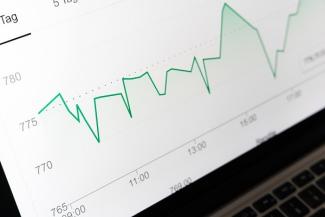
Finance Deep Dive: How is Inflation Calculated?
Inflation is a ubiquitous economic concept that impacts the everyday lives of people around the world. It's a critical factor in understanding the rising prices of goods and services, affecting everything from the cost of groceries to the value of investments. But have you ever wondered how inflation is calculated?
In this post, we’ll dive into the world of inflation calculations and show an example of how inflation is really calculated.
What Is Inflation?
Before we dive into the calculations, it's essential to understand what inflation is. According to the International Monetary Fund, inflation measures how much more expensive a set of goods and services has become over a certain period (usually a year).1 To track and measure this economic metric, economists rely on various indices and indicators.
Measuring Inflation: The Consumer Price Index (CPI)
The most common tool to measure inflation is the Consumer Price Index, or CPI. The CPI is a comprehensive measure of the average change over time in the prices paid by urban consumers for a market basket of consumer goods and services.2 These goods and services include everything from food, clothing, and housing to healthcare, transportation, and entertainment.
How to Calculate Inflation
Now, let’s look at how to actually calculate inflation:
Step 1: Selection of the Basket of Goods
The first step in calculating inflation is to determine the basket of goods and services that will represent the average consumer's spending.3 The selection of these items is crucial and should be a fair representation of what an average person buys.
Step 2: Price Data Collection
After defining the basket of goods, the next step is to collect price data. This involves tracking the prices of every item in the basket over time. Price data collection is an extensive process that involves visits to retail stores, online marketplaces, and other sources.4 The Bureau of Labor Statistics (BLS) records both the price of goods and services and the price of housing.
Step 3: Calculate the Base Year Index
To calculate the CPI, a base year is chosen, and the prices of items in the basket are collected for that year. The CPI for the base year is always set to 100. All future CPI values will be calculated relative to this base year.
Step 4: Calculate the Current Year's Index
Once the base year’s index is established, the same items in the basket are priced in the current year. The formula used to calculate the CPI is as follows:
CPI = (Cost of Basket in Current Year / Cost of Basket in Base Year) x 100
This formula measures the percentage change in the cost of the basket of goods and services from the base year to the current year.
Step 5: Calculate Inflation
The final step in the process is to calculate the inflation rate using the CPI values of the base year and the current year. The formula for calculating the inflation rate is as follows:
Inflation Rate = (CPI in Current Year - CPI in Base Year / CPI in Base Year) x 100
This formula calculates the percentage change in the CPI from the base year to the current year, which represents the inflation rate.
An Example of How Inflation is Calculated
Let's walk through a simplified example to illustrate the process. Suppose we have a base year (Year 1) and a current year (Year 2).
Cost of Basket in Year 1 = $100
Cost of Basket in Year 2 = $110
Using the CPI formula:
CPI in Year 2 = ($110 / $100) x 100 = 110
Now, the inflation rate is calculated:
Inflation Rate = ((CPI in Year 2 - CPI in Year 1) / CPI in Year 1) x 100
Inflation Rate = ((110 - 100) / 100) x 100 = 10%
This means that prices increased by 10% from Year 1 to Year 2, indicating an inflation rate of 10%.
Inflation is a complex economic concept that plays a significant role in our daily lives. Understanding how inflation is calculated, particularly through the Consumer Price Index, can provide insights into the dynamics of rising prices, and what this might mean for the economy in the months to come.
Questions? Want to discuss potential strategies for "inflation-proofing" your portfolio? Contact our office for a free strategy session.
Sources:
https://www.imf.org/en/Publications/fandd/issues/Series/Back-to-Basics/Inflation
https://www.bls.gov/cpi/questions-and-answers.htm
https://www.investopedia.com/terms/b/basket_of_goods.asp
https://usafacts.org/articles/what-is-inflation-and-how-is-it-measured
Disclaimer:
The information presented here is for educational purposes only and is not a solicitation for the purchase of any financial product. The statements and opinions expressed are those of the author and are subject to change at any time. All information is believed to be from reliable sources; however, presenting financial professional makes no representation as to its completeness or accuracy. This material has been prepared for informational and educational purposes only. It is not intended to provide, and should not be relied upon for, accounting, legal, tax or investment advice.
